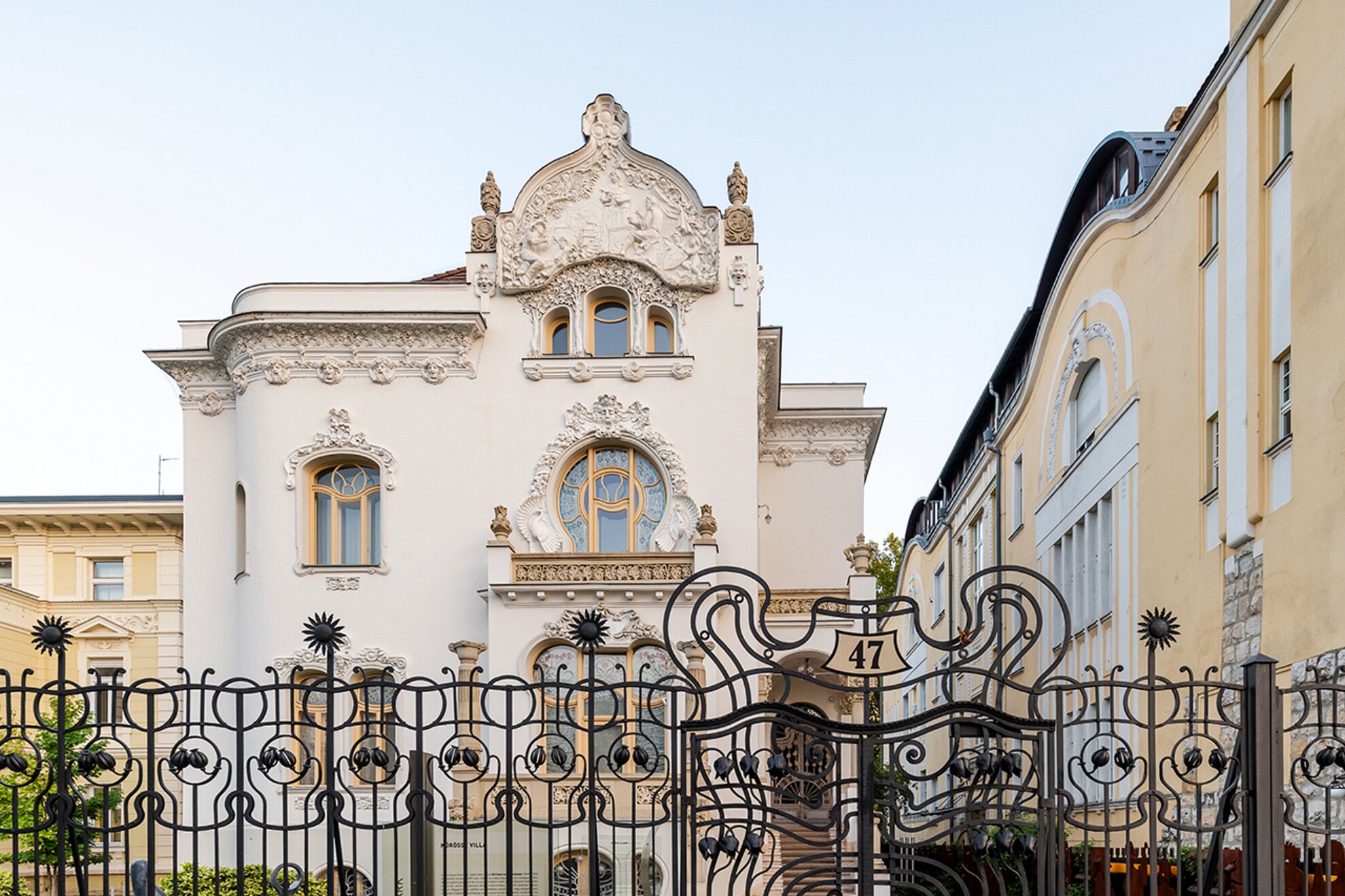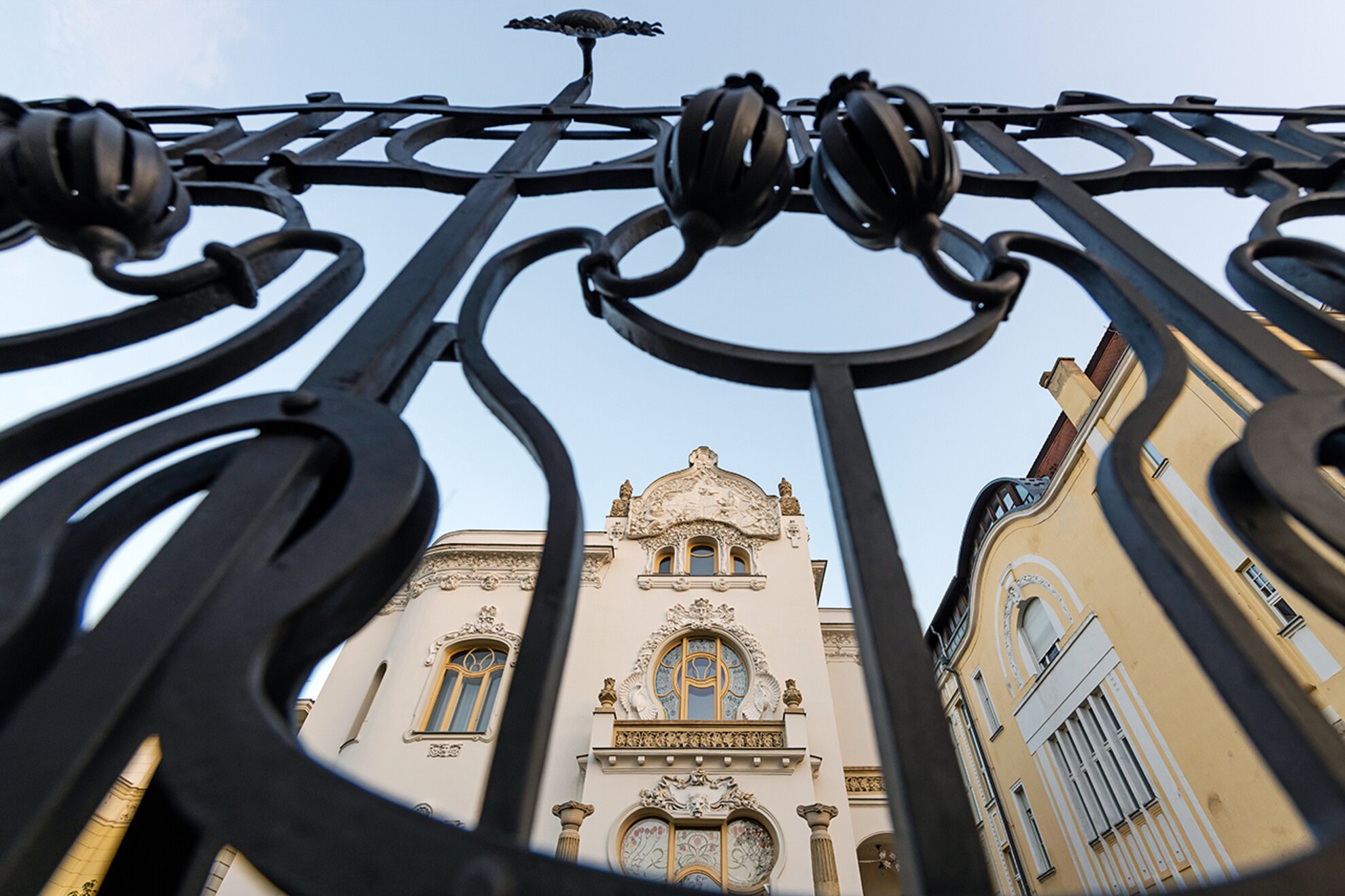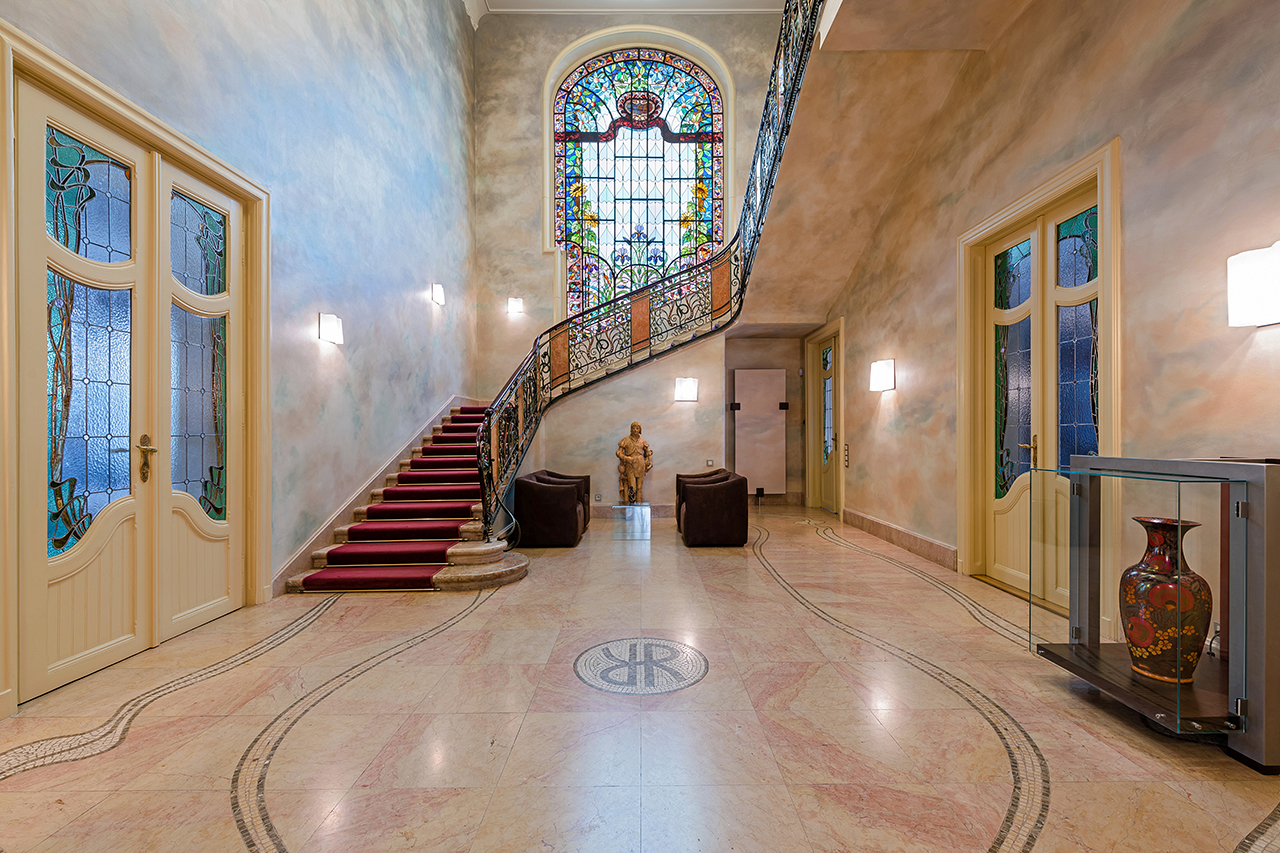Urban wandering around Budapest’s Golden Age on a self-guided walking tour is a great way to escape and explore a different side of the capital. Join us as we decipher the mysteries of a splendid mansion on elegant Városligeti fasor: the Kőrössy Villa.
Splendid hidden gems line Városligeti fasor in the diplomatic quarter. You’ll find dozens of Art-Nouveau
villas and churches, each one more beautiful than the next. Grab your mask and see
for yourself this one-of-a-kind neighbourhood where you’ll stumble upon ornate
floral and animal-patterned plasterwork, dazzling Zsolnay tiles, lush gardens
and lavish buildings.
The villa at number 47-49 is a real treat for the eyes –
no wonder passers-by often find themselves peeking over the wrought-iron fence
to admire this Art-Nouveau diamond.

Built in 1899, the Kőrössy Villa is one of the oldest buildings on
Városligeti fasor. Originally, it was designed to be used as a holiday home but
later Albert Kálmán Kőrössy – the architect himself – decided to move his
studio to the villa’s first storey. He is a forgotten luminary of Hungarian
Art-Nouveau architecture whose legacy is just as exceptional as Ödön Lechner’s
or Miksa Róth’s.
Actually, the three shared history as Kőrössy spent his
apprenticeship at Lechner’s workshop, while Róth was the artist commissioned to
create the villa’s marvellous stained-glass windows.

Kőrössy’s years working under Lechner helped shape the young man’s architectural style in which the collision of French Art Nouveau and German Jugendstil create a fascinating medley of exuberant ornamental art and geometric, billowy motifs.
The decorative richness of the Gallic style – which manifests itself in the villa’s ornate design – makes onlookers feel like they are gazing at a luxurious and elaborate cake with lavish marzipan figures on top as decoration.

Art historian and curator Eszter Baldavári revealed in her study that Kőrössy purchased the plot of 2,160 square metres in the spring of 1899. His elaborate property quickly blended into the splendid ensemble of aristocratic holiday homes and mansions of this up-and-coming neighbourhood.
Besides the villa, Kőrössy had two other buildings constructed on the longish site: a stable, and an office which he shared with his contemporary, fellow Art-Nouveau architect Artúr Sebestyén.

The walls are covered with intricate motifs and symbols, each guarding secrets waiting to be deciphered. The ornamentation is an endless collection of delicate flowers, wild animals and statues depicting a variety of expressions and emotions. Yggdrasils, sunflowers, irises, peacocks, poppy-heads and fruit are hallmark motifs of Art Nouveau, each present in a quiet corner of the garden or on the exquisite gates of the wrought-iron fence.
Nothing is purely coincidental, as every symbol has its own underlying interpretation – whether the intricacy of celestial spheres or the prominence of art.

Wannabe detectives may also channel their inner Sherlock Holmes as they scrutinise the gable and piece together the mystery of the figures on the relief, each representing an allegorical character of painting, sculpture or architecture. Close observation reveals that the metaphorical character of architecture is actually Kőrössy himself, as the figure is portrayed studying a case model of his own villa on Városligeti fasor.

During World War II, the villa was hit by a single bomb which damaged the plasterwork, stucco and mainly the gable. The most battered elements were demolished and later rebuilt – but the property wasn’t restored to its former glory until 1996.
In the 1940s, quick and effective repair of war-damaged buildings was the way to go, hence the large number of magnificent but never-restored cupolas missing from the top of the city’s buildings.

Legend has it that the impressive leaded glass window in the entrance hall only survived the war because it was taken apart beforehand, each piece carefully packed away to ensure maximum protection.
The window’s floral pattern reappears on the wrought-iron, marble-inlaid banister of the marvellous stone staircase. Ceiling stuccos and the door handles of the ground-floor rooms are all original, similar to the furnishings in the entrance hall.

In 1998, the aristocratic splendour of the early 1900s finally returned to the villa with the comprehensive restoration initiated by the property’s new owner – and sole investor – who commissioned architect Flóra Csabai to restore the building to its heyday glory.
In the first stage, the gable was recreated based on a black-and-white photograph found in an archive. In 2016, the second stage included a complete revamp of the interiors – designed by Avraham Yakobi, partly responsible for the ibis Styles Citywest hotel – and the creation of a cultural space on the ground floor. The Kőrössy Szalon soon began to showcase educational, communal and cultural events.




